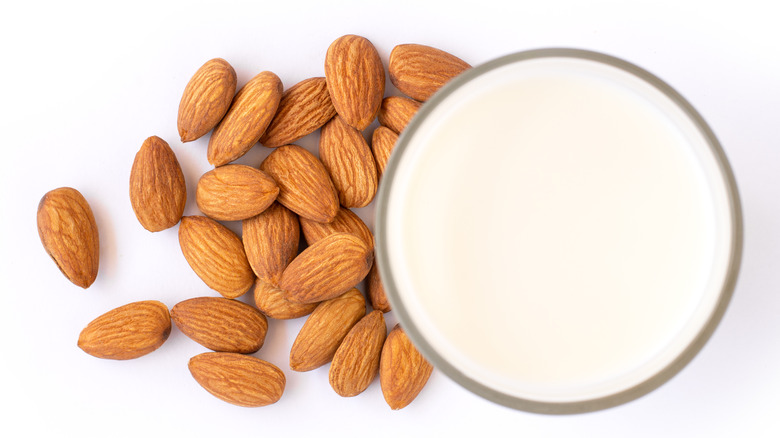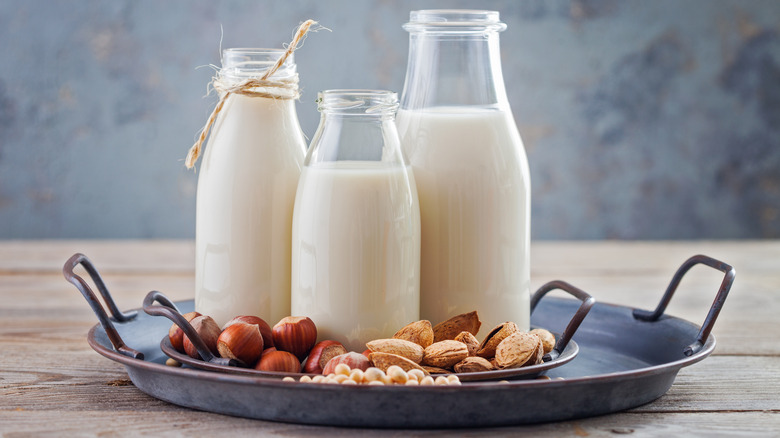How To Tell If Almond Milk Has Gone Bad
Almond milk's popularity is on the rise. Not only is it the most popular of the plant-based milks — which, as Euromonitor notes, accounted for $18 billion in worldwide sales in 2021 — it has a massive projected compound annual growth rate (meaning it's only getting more and more popular).
That's thanks not only to its pleasant taste but also its abundant health benefits and lactose-free status (via Global Newswire). If you're an almond milk producer or consumer, in other words, life is good.
But even good things can go bad, at least when it comes to perishability and spoilage. So how long is your almond milk good for, and how can you tell when it has gone bad?
The first part of that question requires a bit of nuance. For starters, commercial production methods vary according to the size and scale of the companies making the milk. Many varieties of almond milk, for example, are produced using ultra-pasteurization to extend shelf life, via Epicurious. Ultra-pasteurized almond milk may taste a little different, but in addition to being longer-lasting, it's more hygienic, too, notes Good Housekeeping.
For unopened almond milk bought in a supermarket, MyRecipes estimates the shelf life can be as much as 90 days, depending on the brand. For consumers, however, the important numbers are the "best by" dates listed on the bottle or carton. Once almond milk has been opened, per Epicurious, it should last about seven days in your refrigerator.
Here's how to tell if your milk has gone bad by sight and smell.
Signs your almond milk has gone bad
Best-by dates are always good indicators, but there are other signs to look for as well. Spoiled food and drinks often display common characteristics — bad smells and off-colors being two of the most typical.
With milk, whether animal- or plant-based, you can also expect the clumpiness factor, meaning it curdles or acquires telltale chunks or lumps. So-called separated milk is not always bad, however. The Kitchn suggests shaking it up first. If it still has chunks afterward, then you can toss it.
"From a fresh product, it's very clear to tell when it's not good anymore," Carolyn Flood, co-founder of NotMilk, notes in Epicurious. "It definitely has a different smell and really starts to clump up."
Lacademie also cautions consumers about the appearance of black spots in their almond milk, a sure sign it has been contaminated by mold. Sour-tasting milk is another red flag.

